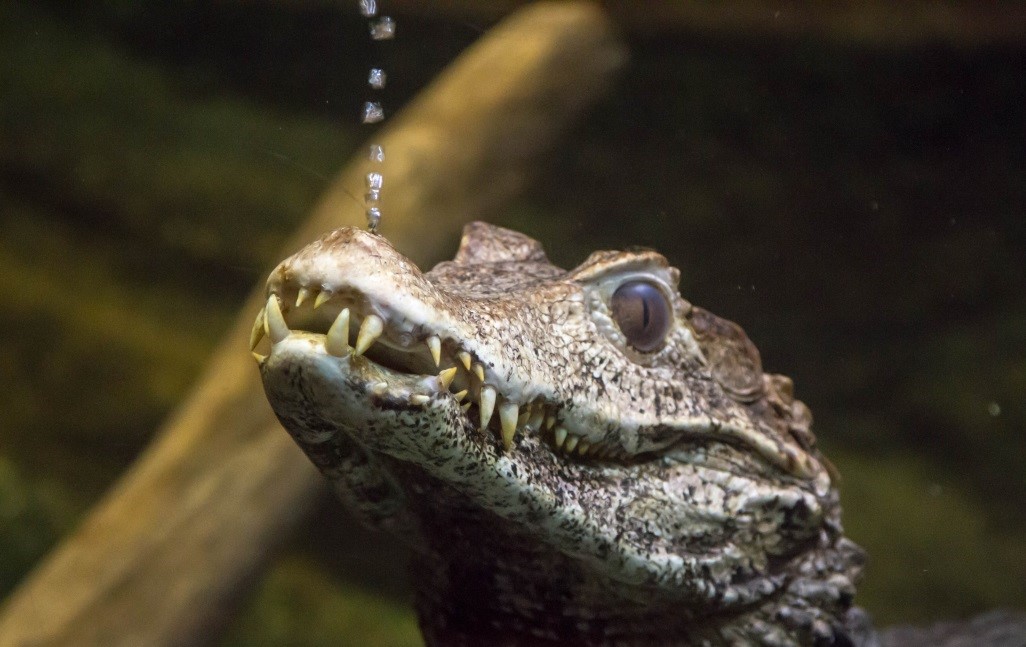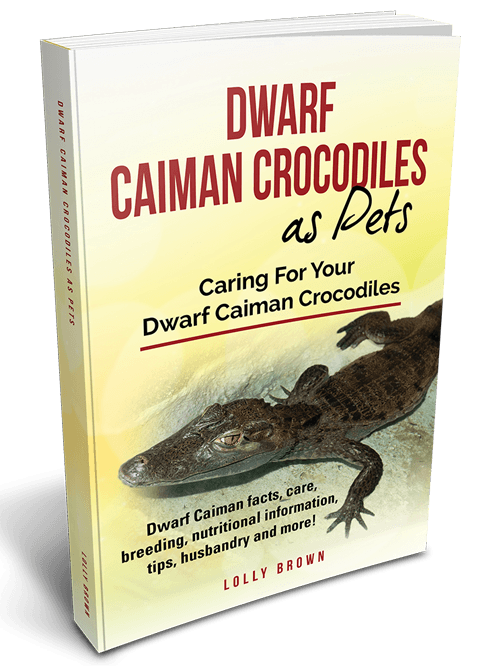CHAPTERS
Navigate to chapter
► Chapter One: Getting to Know Dwarf Caimans
► Chapter Two: Dwarf Caiman Requirements
► Chapter Three: Tips in Buying Dwarf Caimans
► Chapter Four: Habitat for Your Dwarf Caimans
► Chapter Five: Feeding Your Dwarf Caimans
► Chapter Six: Dwarf Caiman Husbandry
► Chapter Seven: Handling Your Dwarf Caiman
► Chapter Eight: Breeding Your Dwarf Caiman
► Chapter Nine: Keeping Your Dwarf Caiman Healthy
Chapter One: Getting to Know Dwarf Caimans

Dwarf Caiman crocodilians may often times look like a really scary creature that will make you have goose bumps and be in an ‘alert mode’ once you see them. In whatever attitude or mood it appeals, you can expect as something that will definitely pique your interest and make you tougher and more courageous. After all only fearless people will acquire an interesting and exotic kind of pet!
Dwarf caimans may be relatively small and handy compare to taking care of a huge crocodile. But it may not be the right choice for everyone. Before you decide whether or not it might be the right pet for you and your family, you need to learn and invest a significant amount of time in getting to know these creatures because it may not be suitable for first time crocodilian or reptile owners; this breed has additional husbandry requirements which may be difficult if you haven’t had any experience of handling a crocodilian before.
In this chapter you will receive an introduction to the Dwarf Caiman breed including some basic facts, different types info, as well as how to deal with them. This information, in combination with the practical information about keeping reptiles in the next chapter, will help you decide if this is the perfect pet companion for you.
In this section you’ll find some interesting fun facts about Dwarf Caiman crocodilians, their breed origin, body features, breed types and other relevant information.
The Dwarf Caiman’s scientific name is Paleosuchus Trigonatus. It is mostly found in South America particularly in the Amazon River.
The Dwarf Caiman species can be found in and around cold streams as well as rivers or ponds. It is also found in waterfalls or rapids or bodies of water that is fast flowing – so better be careful if in case you are going on a trip in an unknown falls because they love staying in cold waters compare to other crocodilians!
The Dwarf Caiman is the smallest crocodilian in the world. This specie only grows from about 4 to 6 feet; the smallest species of dwarf caiman is called the Caveas Dwarf Caiman which only grows about 4 to 41/2 feet once it reaches adulthood. Unlike most crocodilians that have yellow eye coloring, Dwarf Caimans are known to have brown eyes. This particular breed have osteoderms or bone plates, compared to other crocodile species theirs is quite huge and they have more. Their feet is also different because they have no webbing or it’s not a webbed feet just like most reptiles or crocodiles for that matter. This only means that when they become adults they like to live in land or they developed into terrestrial creatures, most of them can be found in higher uplands in the wild.
In crocodilians particularly for Dwarf Caimans, the sex of the species is determined by temperature where the eggs are incubated. Incubation time of this particular species is longer than most crocodilians. They usually lay in clutches of ten to twenty eggs – if you choose to breed them (which we will tackle on in Chapter 8 of this book), expect to have lots of baby crocs around! It takes about 100 – 115 days to incubate. The female dwarf caimans have a very interesting way in how they build their nests. They build it out of decaying vegetation, and they actually lay their nests next to termite mounds. Apparently, the mounds provide heat generation for the next, sometimes they’ll even build on an old nest site even if the termite nest is dead (yes, it sounds gross and weird but that’s how mother nature designed it). The heat from the decaying vegetation in the nest is sufficient to incubate the eggs properly. This is the only species of crocodilian that nests around termites in this particular way. This kind of behavior may help compensate for the lack of heat from the sunlight since these creatures live in shady forest habitats in the wild.
Dwarf Caimans in the wild feeds on birds, fish, reptiles and even large mammals (so better be careful – these creatures will not consider you a caretaker, to them you are just a large mammal that they could eat if you are not cautious!).
Just like any reptiles, handling dwarf caimans can be quite difficult because they will always feel threatened. It is a natural instinct to become threaten because in the wild, it only means that if somebody touches you, you’re certainly a prey. If you start touching your dwarf caimans while it’s still young, it may get used to you, and could be calmer compared to them being handled for the first time. Although, it’s not advisable to constantly touch or handle them because it could cause stress which could also lead to illnesses.
Crocodilians are healthy in general but it doesn’t mean that they won’t get sick. Like other animals, they are also predispose to certain illnesses such as parasites, hypoglycemia, and could also suffer from different kinds of stress such as thermal stress, capture stress or social stress (which we will tackle on Chapter 9).
Different Breeds of Dwarf Caimans
In this section, you will learn the different breeds of Dwarf Caimans – their physical characteristics, their temperaments and other important details you need to consider before acquiring them. Not all of the breeds listed below are suitable for you and some may also not be available in your area, so be sure to read the common facts and also try doing a bit of research if you have selected a pet crocodilian breed. Some dwarf caimans are still rare at the time of this writing, you’d be lucky if you can find a variety of these breed in your location.
Caiman Crocodiles are a large family and it consists of many species including the dwarf caimans. There are only 2 species under the Paleosuchus genus: the popular Cuvier’s Dwarf Caiman and Schneider’s Dwarf Caiman. Many people choose the Cuvier’s because it is widely available compared to the Smooth – Fronted Caiman.
Continue Reading…
Want to read the entire thing?

